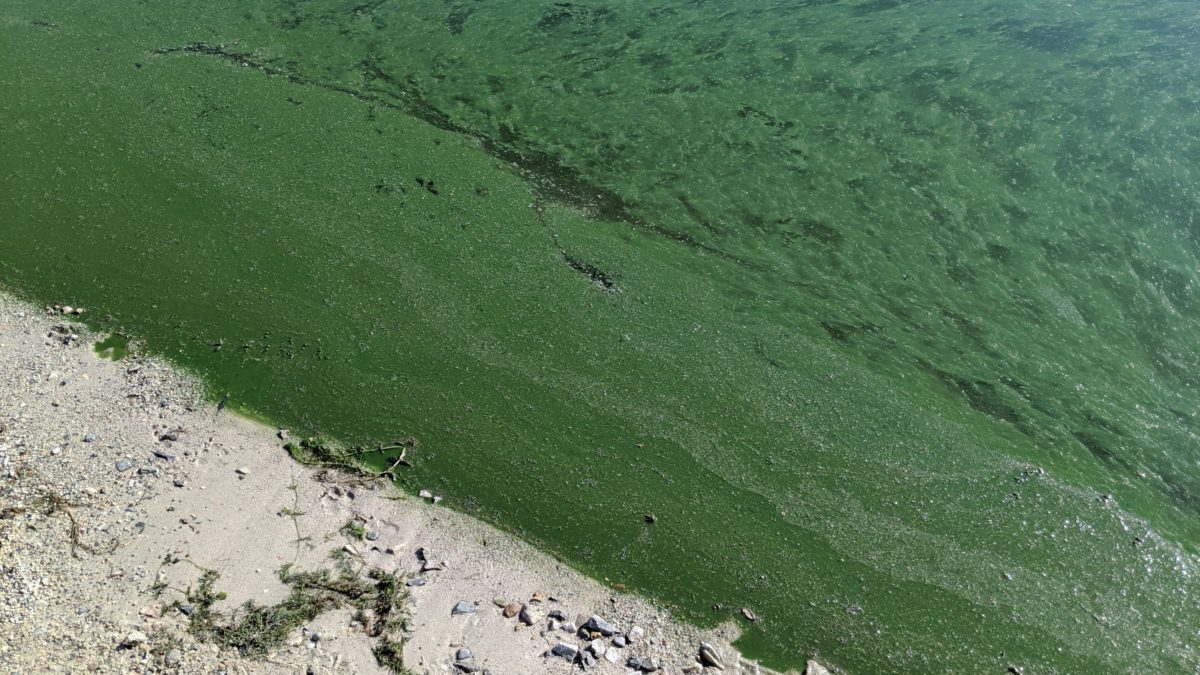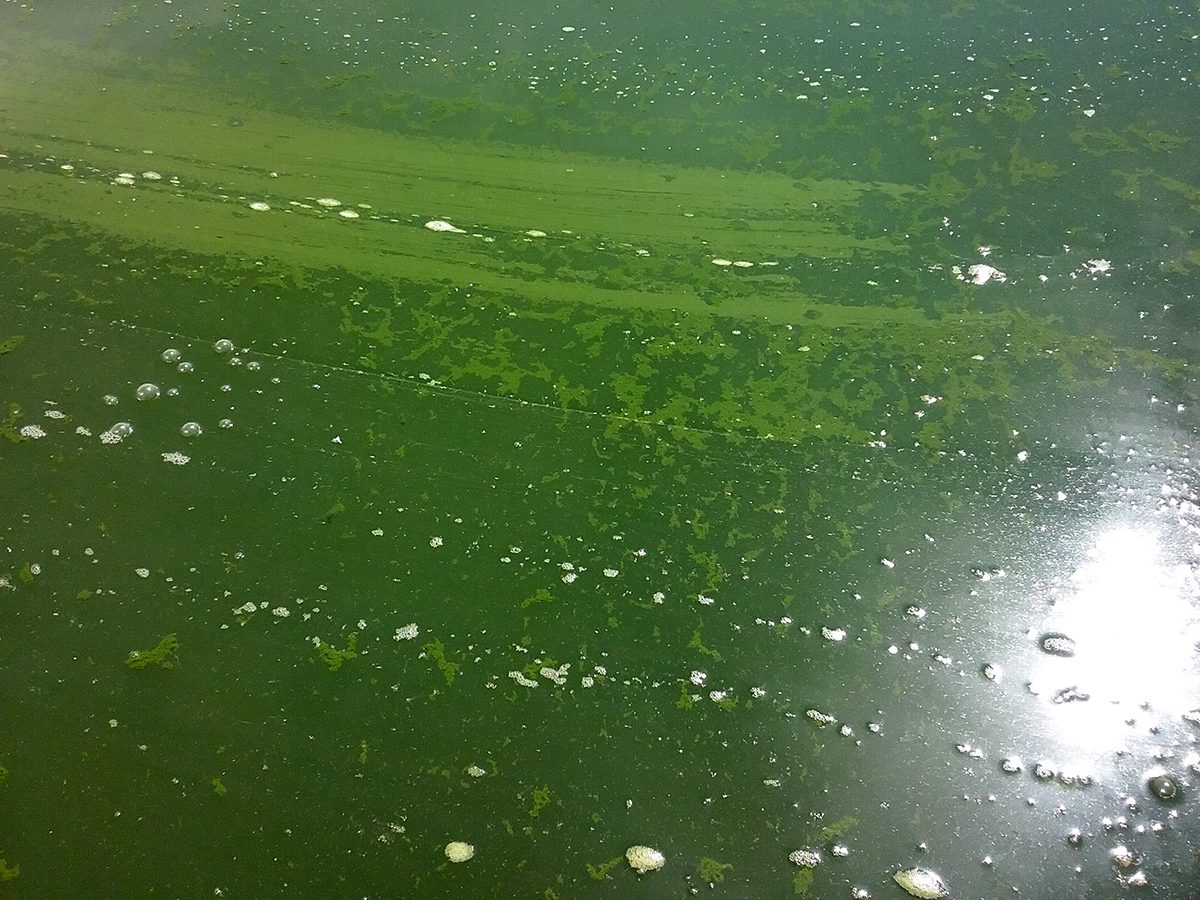Environment
Harmful algal bloom in Deer Creek and Rockport reservoirs leads to health advisory

An example of green scum look from an algal bloom in Utah Photo: Courtesy of Utah Department of Environmental Quality
Utah — The Utah Department of Environmental Quality (UDEQ) cited Deer Creek and Rockport Reservoirs as having toxins produced from harmful algal blooms present. A health advisory for Deer Creek Reservoir started on September 9, while Rockport Reservoir followed on September 12 after finding high concentrations of harmful toxic producing algae in the tested samples from each reservoir.
The heat and dryness of summer is a hotbed for algal blooms across the country as water levels recede, providing a perfect environment of warm standing water for algae to grow. Currently, there are currently 17 advisories in place across Utah.
Areas of high nutrient concentration from agricultural runoff, waste sources, and previously submerged sediment being exposed to light make certain areas higher risk than others.
The Island Park Area in Deer Creek Reservoir is the noted area of concern, although algal bloom can happen anywhere throughout the reservoir.
“Deer Creek is such a big water body. It’s tricky to quantify the areas of higher risk because a lot of these species can move. They’ll rise to the surface certain parts of the day, and then if there are winds, they might accumulate,” said Hannah Bonner, Harmful Algal Bloom’s Coordinator for the UDEQ.
The entirety of Rockport Reservoir is under a warning advisory as samples taken at different locations were found to contain toxins produced from algae.
“Our monitoring team was at Rockport recently. They visited four different sites along the shore of the lake, and they saw blue material at each of these sites. That, to me, is an indication that it’s more widespread. We also use satellite imagery and are seeing more detections across the water body from that perspective as well,” said Bonner.
Under the issued warning advisory, it is recommended not to swim or water ski and to avoid areas of algae when boating. Animals should not be allowed to enter the water, nor should any water be consumed as the potential for serious health risks is present.
Although fishing in either reservoir is not without its risks, consuming fish caught in bodies of water where harmful algal blooms have occurred is considered okay, with the caveat that research is still being done by scientists on the matter.
“Scientists are still trying to figure out the exact answer as the latest research shows that there is potential for some toxic accumulation in the guts and sometimes the skin. That’s why the recommendation is to clean the fish well and discard the guts and skin. Wash off filets in freshwater, not in the water body. That’s the EPA recommendation as well and seems to be our best understanding, but definitely still something we’re learning about,” said Bonner.
There are many ways to help the UDEQ monitor Utah Bodies of water, such as reporting suspected algal blooms to their 24-Hour Environment Incidents Line at (801) 536-4123.
There is also the option of taking a more active role by participating in Utah Water Watch, a Utah State University extension program made up of volunteer members of the public. Within the program, there is the Utah HAB Squad which monitors water bodies for harmful algal blooms.
Water quality and other health advisory updates can be found on the UDEQ website and UDEQ Instagram.



















